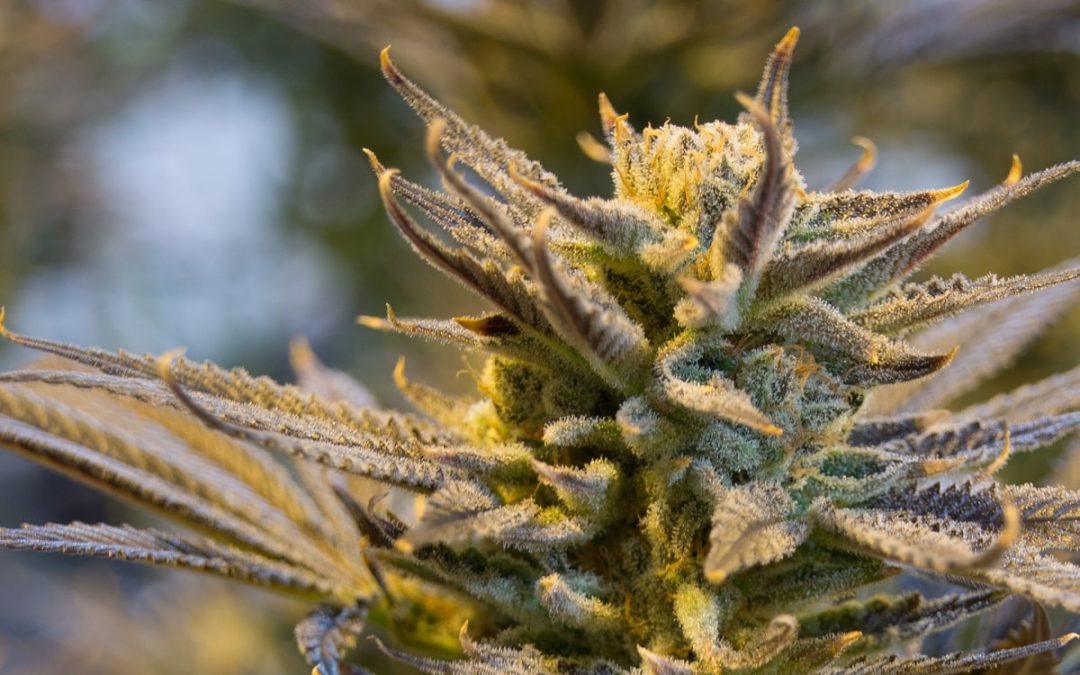The proof of which strain is the best lies in the research
Research, testing and grow techniques give Shango the edge.
Imagine cannabis that uses no chemicals to create, never handled by human hands and genetically engineered to be the most potent strains for THC, CBD and terpene content.
Shango’s flower begins with superior genetics – the vast array of biological characteristics that determine how a flower looks, smells and tastes, and how much THC it contains along with a vast array of terpenes.
Shane McKee spent 12 months and more than a million Shango dollars to develop the top strains sold in dozens of dispensaries in Oregon and Las Vegas. He started out with 60 strains.
“Each cannabis strain is like a family,” McKee says. “Each has a mother and father. In genetic terms, they are genotypes. Their seeds – the children produced by this marriage – inherit various genetic characteristics from both parents, known as ‘phenotypes.’”
No two children are exactly the same. They may resemble their parents or siblings, but, at the genetic level, they are all individuals. Likewise, each cannabis phenotype is childlike. Each seed will produce a plant with characteristics that are related to, yet different from, its parents and siblings.
For instance, choosing a landrace strain such as Lambs Bread from Jamaica can be mixed with something from Africa to create a mega strain, or they may be incompatible.
“We don’t mix like-minded strains, we’re cross breeding strains on opposite spectrums,” McKee says.
One phenotype may produce a small plant with big, ugly buds that smell wonderful, taste awful and contain lots of THC. Another may produce a large plant with small, beautiful buds that smell and taste good, have monster terpenes but have low THC.
“The trick is to find the one phenotype that produces all of the ideal characteristics of that strain – the one with the superior genetics required to make it a Shango strain,” McKee says.
The only proper way to do this is to plant hundreds of phenotypes – hundreds of seeds from the same parents. Each phenotype must be grown to maturity in a carefully controlled environment. Its flower and leaves must be evaluated for appearance, aroma, flavor, THC content, effects and many other characteristics.
“These phenotypes must be allowed to flower again in order to verify the results,” McKee says. “We grow them multiple times so it’s not a fluke deal. Only then can we determine which one is the best of the best.”
Developing superior plant genetics is a complex process that requires intensive research, thorough testing, exhaustive analysis and endless patience.
“We are creating a differentiator from the competition,” McKee says. “We are creating products the market is not flooded with. We are creating or acquiring unique genetics and phenotypes.”
McKee has been designing facilities and cultivating cannabis in Oregon since 1997. He combines that experience with 25 years in the construction industry to give him the expertise to create and maintain large sites for Shango Premium Cannabis. He oversees operations at five grows in Oregon and one each in Washington and Las Vegas that total hundreds of thousands of square feet. McKee stresses that superior genetics are useless if the plants are grown in inferior conditions.
“Our proprietary cultivation process enables us to produce consistently superior products that meet the growing demands of the marketplace, as well as the high expectations of our customers,” McKee says.
All Shango brand cannabis is grown in state-of-the-art, indoor hydroponic facilities that maintain the optimal environmental and nutritional conditions required to produce the maximum amount of premium quality cannabis from each plant. Each facility has redundant climate control systems that guard against power and equipment failures, and strict quality assurance procedures that protect crops from contamination, insects and disease.
“Genotypically, you end up with better stabilization. You can see the difference,” he says.” And we will go through 500 phenotypes to find superior strains.”
While “100 percent organic” farming methods may produce better foods, they often do not produce the best cannabis. That’s why Shango doesn’t use certain types of organic substances, which add unwanted colors, flavors and odors to the flower. Shango uses a proprietary regimen of natural bio-mineral, organic and select synthetic fertilizers and supplements.
Shango never uses growth hormone regulators, chemical sprays, pesticides or drenches.
“What people spray on food we would never use on our flower,” he says. “We don’t use sprays any time on detrimental pests or root problems. Does anyone want to smoke oil or other pesticides? To think you are smoking that!”
Shango’s biological pest control program recruits “good bugs” that love to eat the bad bugs that prey on cannabis.
“These environmentally responsible practices also ensure that no harmful materials are released into our community water supplies,” he says. “Our plants are pest-free in all phases of growth.”
After laboratory costs of $78 per seed, thousands of dollars per strain and 90 days and more to grow and weeks to dry, the strain is grown again to substantiate desired results.
“All these extras may cost us two to three times more but we have chosen to take that path,” McKee says. “We made decisions that cost us more to grow flower that makes a difference.”
To discover what strains Shango offers, choose your state and dispensary location to peruse the menu. To find out which strains Shane McKee has deemed mega strains, catch Part 2 of this revealing blog.
Part 2
Shane’s Strains Are The Best and Here’s Why
Knowledge is power.
Shango mastermind Shane McKee spent 12 months and more than a million Shango dollars to develop the top strains sold in dozens of dispensaries in Oregon and Las Vegas. He started out with 60 strains and thousands of combinations and because no one can duplicate his efforts, he is ready to share his secrets.
“The bottom line isn’t money to us,” McKee says, “But rather our proprietary cultivation process that increases the THC potency of our flower by 10 to 15 percent and the terpene content by 100 to 200 percent, depending on the strain.”
Shango’s flower begins with superior genetics – the vast array of biological characteristics that determine how a flower looks, smells and tastes. But to many who smoke cannabis, how much THC it contains along with a vast array of terpenes is what matters most.
“I don’t know of anybody who is willing to spend the time or the money,” McKee said. “You can buy seeds and go through 500 plants but most strains are not what we are looking for. Very few make the cut. We at Shango make that effort to find the ultimate genetics.”
Shango also has mobile units to do the same process in other states, using custom-designed breeding modules.
“The long-term benefit is our strains are the best they can be for a number of needs our customers face,” he says. “We look for the best terpene profiles, potency and structure. The end user is getting the best of the best. It would be a rare find to try this randomly – like winning the lottery.”
Some of the strains McKee is working on crossing with landrace strains include Sticky B, Grape Valley Kush, A-dub, Bruce Banner No. 5 and Mango OG, where THC content can exceed 30 percent at times.
These will produce some amazing new genetics,” he said. “Stay tuned in 2018 for more of these amazing crosses.”
While these strains are high in THC, they also are saturated with terpenes, powerful organic compounds that give cannabis strains a distinctive scent. There are more than 100 terpenes present in small amounts in different cannabis strains. And your nose knows which terpenes are dominant in each strain by detecting its overall sweet, sour, spicy, fruity, cheesy or skunky aroma.
However, cannabis terpenes do much more than signal the difference between Orange Cookies and Strawberry Cough. They work together with THC, CBD and other cannabinoids to regulate their therapeutic and/or psychoactive effects of CBD and THC. Finding strains with powerful terpene profiles is a primary goal.
Some terpenes can increase or decrease the effect of THC in the brain. One strain that contains certain terpenes may test high for THC but deliver a moderate high. Another low THC strain, which contains different terpenes, may actually have much stronger psychoactive effects.
“Choosing a strain based on its THC content alone might not deliver the results you expect or want,” McKee says. “Would you buy alcohol on proof alone.”
Likewise, choosing a strain based on whether its dominant species is indica or sativa can be just as misleading. The types and amounts of various terpenes in a particular strain provide a much more accurate indication of what its general effects will be.
“You might choose a sativa, expecting its typical uplifting and energizing effects. However, depending on its terpene content, it could actually produce couch lock,” McKee says. “Consumers need to be informed of which strain will get me to clean my house or sleep tonight.”
Each cannabis strain has a terpene profile that that can be tested for percentages of individual terpenes present from prominent to minute. The terpene profile mix reveals why one strain is more effective as a treatment for nausea or anxiety or depression, while another is perfect for partying. Knowing which terpenes are prevalent in a particular strain or extract enables you to choose the product that best meets your medical or recreational needs.
From “seed to sale,” Shango plants and flower are never touched by unprotected hands. At the peak of maturity, highly trained specialists carefully harvest the flower by gloved hand. Each bud is then meticulously hand-trimmed, in custom-designed clean rooms, to preserve its active ingredients and optimal appearance. Finally, the flower is properly cured for a full two weeks prior to packaging or further processing.
Many cannabis purists still wonder why Shango flower is not sold in open jars that allow customers to smell and select individual buds. The simple answer is that every Shango Premium and Private Reserve bud is sealed for preservation to keep buds intact and avoid contamination.
Safety-sealed packaging preserves the quality, appearance and freshness of the flower, as well as the crystals and terpenes that give each strain its potent, signature effects. It prevents contamination by dust, bacteria, oils, odors and other elements that open jars readily permit. It also helps protect customers from product tampering. The best way to view our flowers and products is to stop by any of the dispensaries in Oregon and the Shango Las Vegas store. The proof is in the jar and in the partaking. A lot of time, money and patience go into every grow at Shango.
For McKee, accumulating all this knowledge, combined with his grow experience and the latest in innovation, have led him toward a path to perfection.
“We take pride in what we do,” he says.
The proof is in the flower.
Need help choosing the right marijuana product? Head into one of our marijuana dispensaries in Oregon or Nevada and our friendly staff can recommend a product or view our range of cannabis flowers, topicals, edibles, concentrates, vape cartridges and more!


